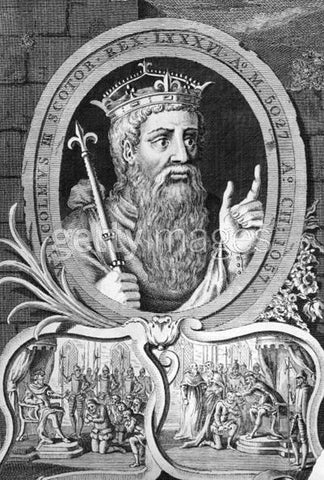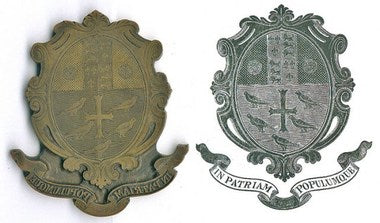A familiar site in Westminster Abbey is the Coat of Arms of Edward the Confessor which stand in many places in his greatest monument. Edward the Confessor (1003-1066) was the son of Aethelred the Unready and Emma of Normandy and is widely acknowledged as the last king of the House of Wessex. He ruled from 1042 to 1066. Edward’s successor Harold Godwinson was defeated by William Duke of Normandy, which led to the England’s domination by the Normans. Edward the Confessors Arms consist of a golden cross”flory” and five gold doves on a blue shield; Azure, a cross flory or between five doves of the same.
EDWARD THE CONFESSOR COAT OF ARMS
The thirteenth century heralds that devised this shield based it on a coin of the Confessor, containing the cross usual to the reverse side of English money, but in the quarters four doves instead of the customary pellets. A dove surmounts the scepter in Edward’s seal, and it is clear that he regarded this bird, emblem of piety and gentleness, as his special symbol. Though posthumously conferred, Edward’s Arms are of some importance on account of their medieval and modern associations. They have been incorporated in the Arms of Westminster Abbey, Westminster School., Westminster City, the Borough of Eye in Suffolk, the West Suffolk County Council; they are even found in Canada, where they appear in the shield of the See of New Westminster. They were adopted by the Abbey of Dunfermline, founded by the great-niece of Edward the Confessor, who became the wife of Malcolm Canmore. They were also the basis of the Arms of Edmund Rich, the sainted Archbishop of Canterbury, founder of St. Edmund’s Hall, Oxford, which still bears a red cross “patonce” and four black martlets ( birds) on gold; Or a cross patoncesable between four martlets of the same.
.
WESTMINISTER SCHOOL ARMS
To some of Edward the Confessor’s royal predecessors the heralds assigned modifications of his Arms- a gold cross with only four doves for the kings from Edgar onwards, and the cross flory alone for some of the earlier kings, including Alfred. University College, Oxford, which claims Alfred as its founder, departs from heraldic tradition by using as Arms the cross and four doves attributed to Alfred’s successors. The presence of Edward’s Arms in the roof of Westminster Hall is a memorial not directly to the confessor but to Richard II, rebuilder of the hall, who showed such respect for Edward as to bear his banner in battle and marshal his Arms on the royal shield. Another emblem attributed to Edward the Confessor is a hand grasping a ring; the ring he gave as alms to an old pilgrim at the consecration of St. John’s Church at the place subsequently called Havering, Essex. The pilgrim was St. John himself, who later sent the ring back to King Edward with word that he should “dispose of his goods, for within six months he shall be in the joy of Heaven with me, when he shall have his reward for his chastity and good living.”





